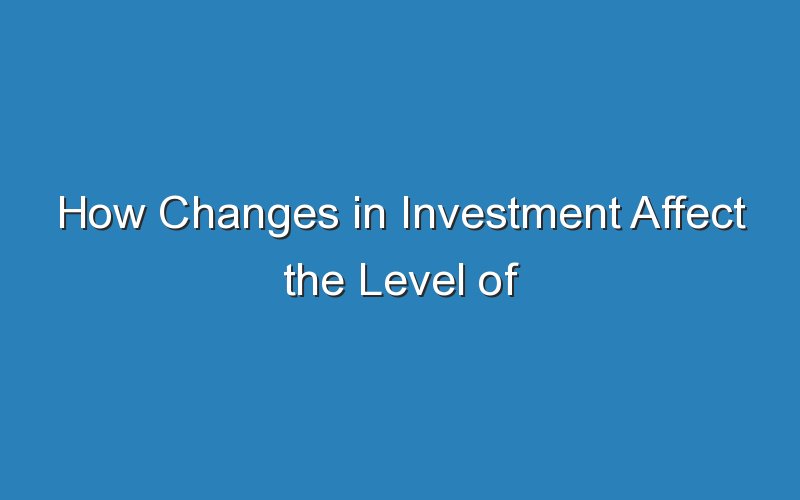The changes in investment rate can help us see whether the economy is growing or shrinking. In other words, if the investment rate is high, the economy is growing, while if it is low, it is shrinking. The change in investment is correlated with the growth in GDP. In the graph above, the rate of investment increases as GDP decreases. This is because more investments are made in sectors where the expected rates of return are higher.
Changing the interest rate can change investment levels. This is because a change in interest rates can raise the level of investment by $50 billion per year. A multiplier of two will move the aggregate demand curve to the right by an amount equal to the amount of interest charged. This increase in investment increases the total quantity of real GDP demanded at each price level. For example, at point C, the total demand for real GDP is $8,000 billion per year. At point D, the demand for real GDP rises to $8,100 billion a decade. Likewise, a reduction in the investment rate will shift the aggregate supply curve to the left by the multiplier of the change in investment.
In the following graph, the same investment rate has two effects on investment: reduction in the real interest rate, increase in demand for consumer goods, and a decrease in investment. The reduction of the interest rate increases investment by $100 billion per year, but shifts the aggregate demand curve to the left by the same amount. This results in an increase in the total quantity of real GDP demanded at each price level. At point C, the total demand for real GDP is $8,100 billion per year, and at point D, the demand for real GDP is $9,100 billion. Similarly, a cut in investment moves the aggregate supply curve to the left by the same multiplier times the reduction of the investment.
During the late 1990s, the demand for investment rose. At this point, the demand for capital goods increased dramatically. Moreover, the interest rate was a major determinant of the investment level in the economy. In the case of the United States, the real interest rate has no effect on the investment level. However, changes in the real interest rate have a direct impact on the level of investment. The reduction in the interest rate shifts the aggregate supply curve to the right by a factor of two.
Since the investment level is an important component of the aggregate demand function, the reduction in the interest rate will increase investment. In the case of the United States, the government’s withdrawal of tax incentives will shift the curve to the left and create an investment boom. With that, the overall demand for real goods would be higher. Therefore, changes in investment will result in a rise in GDP. With a decrease in the real GDP, economic activity will slow.
Investment increases the total quantity of real GDP demanded at each price level. The multiplier of two shifts the aggregate demand curve to the right. In this way, the change in investment will result in an increase in the total quantity of real GDP at each price level. The corresponding change in investment would shift the aggregate demand curve to the left by a factor of two. The same thing would occur with the reduction of the investment.
The reduction in the interest rate increases the level of investment by $50 billion per year. This multiplier causes the aggregate demand curve to move to the right. At every price level, the demand for real GDP will increase. At the end of the day, this means that the investment level will increase. When a recession occurs, the value of capital will decline, which means that the economy will grow more slowly. The decrease in investment will lead to a contraction.
Changes in investment affect the total amount of real GDP. Its value increases as the economy grows, and the level of investment will shift to the left as more people make investments. Likewise, an increase in the real interest rate decreases the total investment. Both of these factors will shift the aggregate demand curve to the left. The reduction in the interest rate also leads to an increase in the capital stock, which is one of the most important determinants of economic growth.

